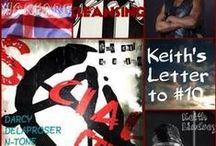
On arrival in America, the Irish people encountered new struggles. The American people had kept old prejudices alive and these included prejudices against the Irish. These stemmed from pre-existing sentiments about Catholicism and the Irish people, especially among the English. Not considered good enough for proper housing, they were forced to cling together in shanty towns, unable to find work because of the phrase, “NO IRISH NEED APPLY” in employment advertisements and the sign “NO SALESMEN, NO IRISH” could be found on doors of private homes as well as shops and other establishments. Poverty was not the only factor forcing the Irish to stay in the slums, shanties and cellars – they were also considered bad for the neighborhood as they were unfamiliar with the conveniences of plumbing and running water. Their living conditions bred disease and ultimately death with an estimated 80% of infants born to Irish immigrants in New York City dying.
Irish people were concentrated at the lowest rungs of the employment ladder, often in jobs considered too unsafe for black slaves to carry out because the loss of a slave was an out of pocket expense for the owner. Subsequently, Irish employment was often restricted to the docks and other areas involving a high risk of injury. Irish men were locked in employment as unskilled laborers while women were employed as domestic servants. Their low level jobs and salaries created a vicious circle of under-education and poor employment.
The city of Boston was an established home of anti-Irish feeling. This can be largely accredited to the large numbers of Irish immigrants that made their home in that city. By 1855, it was estimated that nearly a third of Boston’s population were foreign-born Irish – 50, 000 out of 160, 000. Boston was so Irish it was dubbed by one visitor as “the Dublin of America”. This caused a great deal of fear because people were afraid they would be overrun by Irish immigrants and they allowed political powers to be bred from it.
The Know Nothing party rose to prominence at the zenith of Boston’s anti-Irish feeling in the 1840s and 50s. The party was opposed to foreign immigration, especially Irish Catholics and believed that “Americans must rule America.” In 1854, four years after it was founded, the Know Nothings boasted over one million members and had elected eight governors, more than 100 congressmen, the mayors of Boston, Chicago, and Philadelphia as well as thousands of lesser officials throughout the country. Two thirds of the voters in Massachusetts voted for Know Nothing candidates. Once in power, the party passed a series of laws aimed specifically at the Irish Catholic population of Massachusetts, including compulsory readings from the King James Bible (the Protestant bible) in public schools, disbanding Irish militia units and seizing their weapons in direct violation of their Constitutional rights, and deporting poor Irish back to Britain. 295 Irish were sent back to Liverpool for being a drain on the public treasury. The Know Nothings also sought to deprive Irish Catholics of their right to vote and hold office. The Know Nothing party’s popularity was lost as easily as it was gained when in 1854 the party’s candidate was defeated in the presidential election, signaling the end of its four year reign over American politics.
San Francisco was the site of possibly the greatest Irish opposition. A Vigilance Committee took control of the government and sought to eradicate Irish Catholics from the city. Two were lynched, causing numerous others to flee the city.
In the Southern states, racism against the Irish took a different tack, with the Gaelic immigrants being compared with the black slaves. This led to a phenomenon known as the “black Irish”. Irish workers in these areas were referred to as “niggers turned inside out” while the slaves in turn would be called “smoked Irish.” In some cases, especially those revolving around political matters, the Irish and slaves were considered on a par for their ignorance, as is illustrated by this cartoon which appeared in Harper’s Weekly magazine.
Anti-Irish sentiment was also prevalent in the popular magazines and newspapers of the time through cartoons. A cartoonist influential in the permeating of negative Irish stereotypes was Thomas Nast, who portrayed Irish immigrants as drunks, prone to violence and possessing simian-like facial characteristics. This is evident in many of the cartoons published in the magazine, Harpers’ Weekly. A good example of this is shown below.
These images were used extensively throughout the penny press, entrenching the prevalent stereotypes of Irish immigrants in the national psyche, creating fewer opportunities for change in Irish social status. This is apparent in the fact that though by the middle of the 19th Century many Irish men had risen to the middle and upper classes, becoming respected lawyers, merchants, politicians and clergymen, the simian stereotype of an urban menace remained.
Irish racism did not really begin to decline until the latter half of the 19th Century. By this time large numbers of American-born Irish were experiencing social mobility and middle class culture became established within the Irish community. This was partly originated by a need to differentiate themselves from the black slaves and identify with the white American identity. Lace curtains also became a common sight in the windows of even the poorest Irish neighbourhoods. Racism against the Irish declined also for the reason that as time progressed, new racial groups emigrated to America and sparked new prejudices, which pushed those against the Irish into the background.

No comments:
Post a Comment